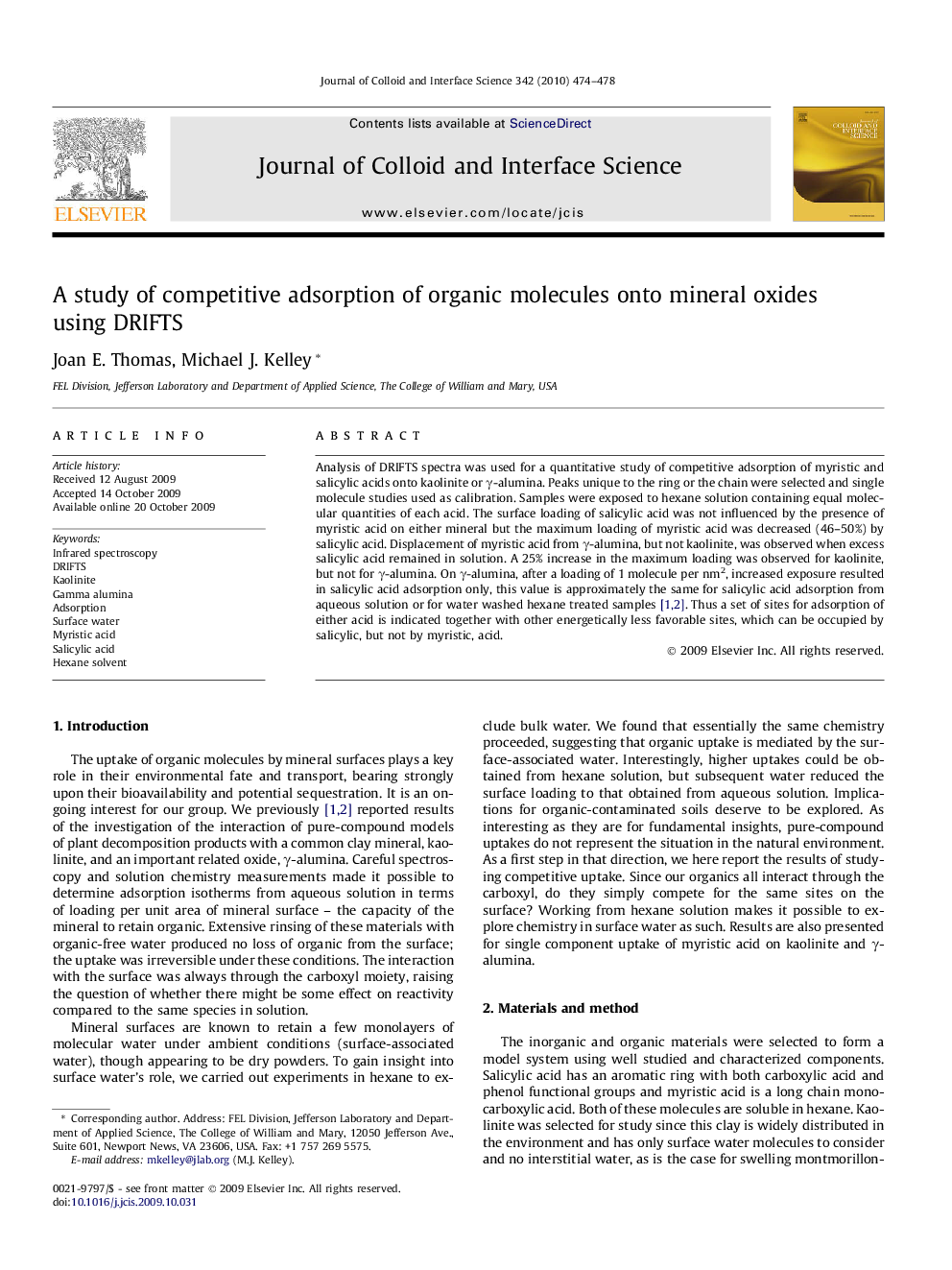| Article ID | Journal | Published Year | Pages | File Type |
|---|---|---|---|---|
| 609545 | Journal of Colloid and Interface Science | 2010 | 5 Pages |
Analysis of DRIFTS spectra was used for a quantitative study of competitive adsorption of myristic and salicylic acids onto kaolinite or γ-alumina. Peaks unique to the ring or the chain were selected and single molecule studies used as calibration. Samples were exposed to hexane solution containing equal molecular quantities of each acid. The surface loading of salicylic acid was not influenced by the presence of myristic acid on either mineral but the maximum loading of myristic acid was decreased (46–50%) by salicylic acid. Displacement of myristic acid from γ-alumina, but not kaolinite, was observed when excess salicylic acid remained in solution. A 25% increase in the maximum loading was observed for kaolinite, but not for γ-alumina. On γ-alumina, after a loading of 1 molecule per nm2, increased exposure resulted in salicylic acid adsorption only, this value is approximately the same for salicylic acid adsorption from aqueous solution or for water washed hexane treated samples [1] and [2]. Thus a set of sites for adsorption of either acid is indicated together with other energetically less favorable sites, which can be occupied by salicylic, but not by myristic, acid.
Graphical abstractAnalysis of DRIFTS spectra was used for a quantitative study of competitive adsorption of myristic and salicylic acids onto kaolinite or γ-alumina. The graph shows adsorption of myristic acid onto kaolinite via the height of the peak at 2926 cm−1 (arising from the alkyl chain).Figure optionsDownload full-size imageDownload as PowerPoint slide
